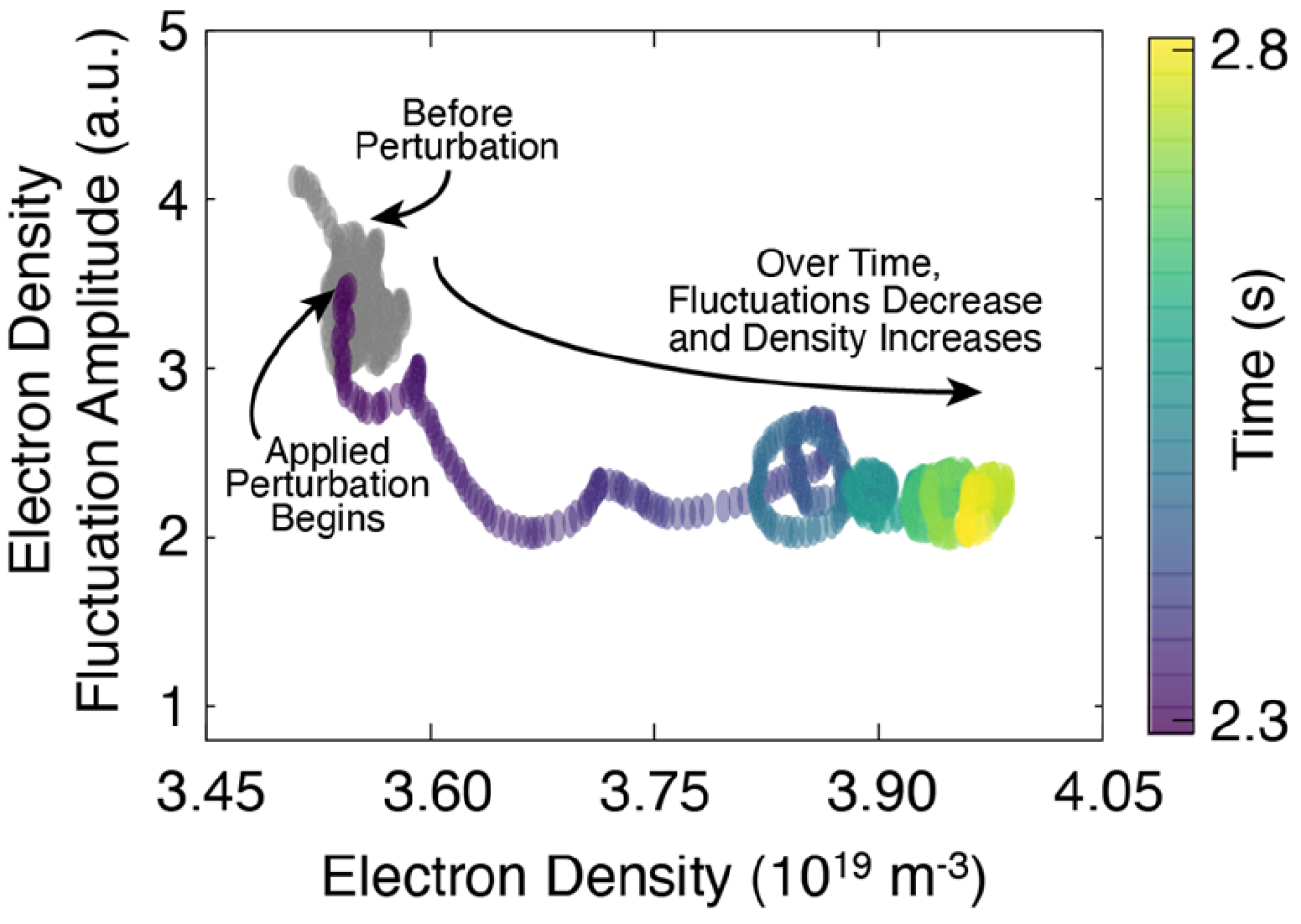
The Science
A tokamak uses magnetic fields to confine plasma and reach the high temperatures necessary to produce nuclear fusion reactions. In some tokamak plasmas, confinement in a particular part of the plasma called the pedestal (the plasma edge) can allow large pressure gradients to form. These pressure gradients (changes in pressure over a distance) lead to plasma instabilities. One type of instability that results from extreme pressure gradients is the edge localized mode (ELM). An ELM involves a burst of particles and energy that leave the plasma and strike the tokamak wall. Fusion researchers can prevent ELMs through controlled alterations of the magnetic field. However, this approach also causes the plasma pressure, a function of temperature and particle density, to be reduced, limiting fusion output. In recent experiments at the DIII-D National Fusion Facility, researchers identified a new regime in which applied magnetic perturbations caused pedestal confinement to improve. Contrary to expectations, this led to increased density consistent with improved fusion performance. The researchers believe the improvement in confinement is due to the applied magnetic perturbations reducing density turbulence in the pedestal, causing particles in the plasma to move inward.
The Impact
These experiments and the associated modeling demonstrate that magnetic perturbations can be applied to a tokamak plasma without reducing fusion performance. This is important for a future fusion pilot plant. Researchers expect these plants to operate at power levels where the power flux expended by large ELMs can damage the device. This will make applied magnetic perturbations important for these devices. The recent experiments suggest that ELMs can be mitigated without surrendering fusion performance if the plasma is rotating in a direction opposite to its current. Building on this work, the design of a fusion pilot plant will benefit from further insights into pedestal confinement and development of maximally efficient ways to use a magnetic perturbation system.
Summary
Under conditions of strong confinement, the pedestal of a tokamak can produce instabilities that expel particles into the device wall. Researchers use applied magnetic perturbations to disturb the pedestal such that these instabilities (ELMs) are either reduced in magnitude or eliminated entirely, although these perturbations do disturb the tokamak magnetic field in such a way that some particles escape confinement. When an ELM occurs, pedestal pressure decreases, but only until the high level of confinement within the plasma allows the pressure to build up again, eventually leading to another ELM event. However, perturbing the pedestal and reducing confinement adversely affect plasma density and fusion performance. Thus, the key has been to allow just enough particle loss to keep the pedestal pressure below the level that results in an ELM.
In experiments at the DIII-D National Fusion Facility, researchers provided the first demonstration of applying magnetic perturbations and experiencing increased plasma density across the pedestal. In this new regime, magnetic perturbations caused the pedestal confinement to improve. Total particle flux on the tokamak wall caused by ELMs was unchanged during the applied perturbations, while the increased plasma density corresponded to an improvement in fusion performance. The researchers attribute the improved confinement to the applied magnetic perturbations reducing density turbulence in the pedestal and causing an inward particle flux. As these dynamics become better understood, it may help researchers design a perturbed tokamak scenario that mitigates ELMs while simultaneously increasing fusion performance.
Contact
N.C. Logan
Lawrence Livermore National Laboratory
[email protected]
Funding
This work was supported by the Department of Energy (DOE) Office of Science, Office of Fusion Energy Sciences, using the DIII-D National Fusion Facility, a DOE Office of Science user facility.
Publications
Logan, N.C., et al., Improved Particle Confinement with Resonant Magnetic Perturbations in DIII-D Tokamak H-mode Plasmas. Physical Review Letters 129, 205001 (2022). [DOI: 10.1103/PhysRevLett.129.205001]

